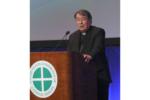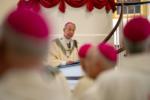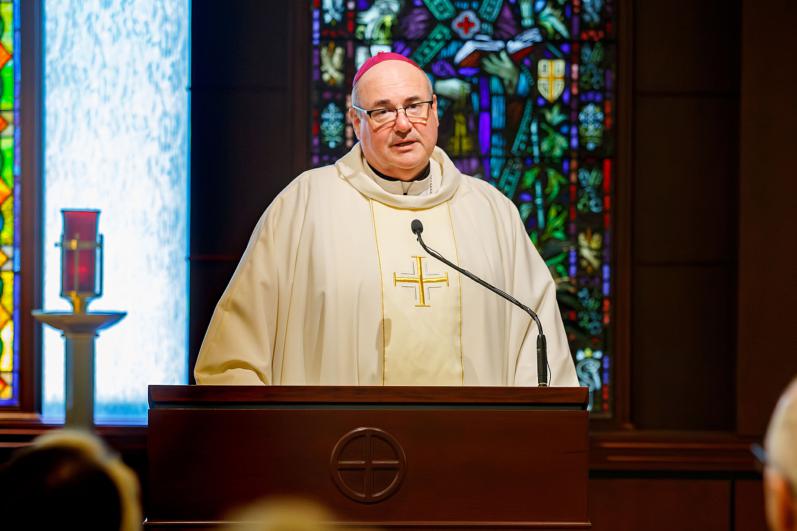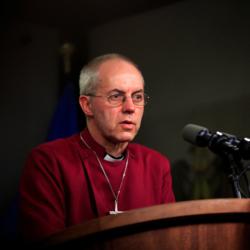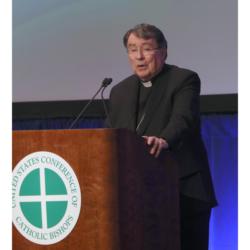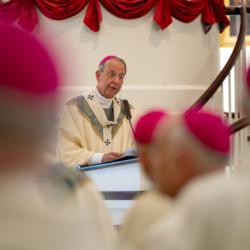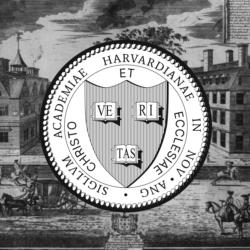Naming the bishop in the Eucharistic Prayer
The installation of our new bishop will require that he be mentioned in every Mass celebrated across the archdiocese from Oct. 31, 2024, after 2:00 p.m., according to the commemoration of the Church in each Eucharistic Prayer. This means that, for the most part, the first occasion for this mention as he begins his ministry will be as the whole Church celebrates the Solemnity of All Saints.
This will be the third time since early 1944 that the name Richard will be prayed for in the Eucharistic Prayer. From mid-1944 to Oct. 7, 1970, either the Latin "Richardus" or the English, Richard, for Archbishop and later Cardinal Richard Cushing, was mentioned. From early December 2002 until July 30, 2003, Richard was again mentioned, while the late Bishop Richard G. Lennon was the apostolic administrator of the archdiocese. And as of Oct. 31, 2024, when our new archbishop's name, Richard, must be mentioned.
The principal celebrant or a concelebrant, if he proclaims the commemoration of the Church in any Eucharistic Prayer, is required to mention the name of the present pope, and the present bishop of the diocese where the Mass is celebrated. In Eucharistic Prayer I, the principal celebrant always proclaims the commemoration of the Church as this prayer is so structured.
Here is what bishops and priests should be praying within the archdiocese and what we should be hearing and praying.
The proper formula is simply ''... with your servant Francis our Pope and Richard our Bishop.'' The addition of more titles, e.g., "our archbishop" or the adding a middle name could be seen as a kind of "unnecessary, pretentious, and affected augmentation."
It is a salutary option to mention as a group the assistant or auxiliary bishops. That simple formula is ''... with your servant Francis our Pope and Richard our Bishop and his assistant bishops...''
The name or names of emeritus or former or visiting bishops, whether diocesan or auxiliary, individually or as a group, are not mentioned in the Eucharistic Prayer.
As you can see from the sidebar, that simple phrase can be more complicated, depending on where and by whom it is proclaimed.
When Archbishop Henning celebrates Mass in the territory of the archdiocese, he prays, .''.. With your servant Francis our Pope, and for me your unworthy servant"; if he opts to include mention of the auxiliary bishop, then this "... with your servant Francis our Pope, and for me your unworthy servant and my assistant bishops."
If he happens to be celebrating Mass at his home parish on Long Island, he prays, ''with your servant Francis our Pope, and for my brother John the bishop of this Church of Rockville Centre, and for me your unworthy servant." Since that diocese also has auxiliary bishops, he could pray, "with your servant Francis our Pope, and for my brother John the bishop of this Church of Rockville Centre and his assistant bishops and for me, your unworthy servant." Logically, but a bit cumbersome, he could also pray "with your servant Francis our Pope, and for my brother John the bishop of this Church of Rockville Centre and his assistant bishops and for me, your unworthy servant, and for my assistant bishops."
Since the word is bishop and not restricted to the diocesan bishop, then other bishops, e.g., our auxiliary or visiting bishops, could pray "with your servant Francis our Pope, and for Richard our bishop, and for me your unworthy servant." Or, if including assistant bishops, "with your servant Francis our Pope, for Richard our bishop and his assistant bishops and for me, your unworthy servant."
Similarly, if any of them was in another diocese, he would follow the same protocol as mentioned above for Archbishop Henning: "with your servant Francis our Pope, and for my brother John the bishop of this Church of Rockville Centre and for me, your unworthy servant." Since that diocese also has auxiliary bishops, he could pray: "for Francis, our pope, and for my brother John the bishop of this Church of Rockville Centre, and his assistant bishops and for me, your unworthy servant."
If a priest is visiting another diocese, it's much simpler for him, he needs bishops, the name of the diocesan bishop and, if he is, let us say in the Archdiocese of New York, where Timothy Michael Cardinal Dolan is the archbishop and he has auxiliary bishops, the simple formula would be as follows: "with your servant Francis our Pope, and Timothy our bishop," or if choosing to include the auxiliary bishops, "with your servant Francis our Pope, and Timothy our bishop and his assistant bishops."
If there is only the diocesan bishop, then this is the formula: "with your servant Francis our Pope, and James our bishop." If there were only one assistant bishop, whether a coadjutor or auxiliary, the assistant could be named individually in this fashion: "with your servant Francis our Pope, and Edward our bishop and Michael his assistant bishop."
Praying for bishops together as a group, e.g., "for our bishops," or serially named, e.g., "for James, Edward, and Michael, our bishops," is not proper.
In Rome, since the pope is the bishop of that diocese, the commemoration is always simply "with your servant Francis our Pope." Although the pope has seven auxiliary bishops of the Diocese of Rome, I have not been able to determine whether the inclusion of those auxiliaries as a group following the above formulae is optional, customary, or proper.
Lastly, if there is no pope, either because of resignation or death, then only the bishop is prayed for, according to the above formulae. If there is neither a pope nor a bishop, then the prayer continues without mention of any name, an unusual but not impossible circumstance.
General Instruction on the Roman Missal
149. The priest continues the Eucharistic Prayer in accordance with the rubrics that are set forth in each of the Prayers.
If the celebrant is a Bishop, in the Prayers, after the words Papa nostro N. (N., our Pope), he adds the following, et me, indigno famulo tuo (and me, your unworthy servant). If, however, the Bishop is celebrating outside his own diocese, after the words Papa nostro N. (N., our Pope), he adds, et fratre meo N., Episcopo huius Ecclesiae N. et me, indigno famulo tuo, (my brother N., the Bishop of this Church of N. and me, your unworthy servant).
The diocesan Bishop or anyone equivalent to him in law must be mentioned by means of this formula: una cum famulo tuo Papa nostro N. et Episcopo (or Vicario, Prelato, Praefecto, Abbate) (together with your servant N., our Pope, and N., our Bishop [or Vicar, Prelate, Prefect, Abbot]).
It is permitted to mention Coadjutor and Auxiliary Bishops in the Eucharistic Prayer, but not other Bishops who happen to be present. When several are to be named, this is done with the collective formula et Episcopo nostro N. eiusque Episcopis adiutoribus (N., our Bishop and his assistant Bishops).
In each of the Eucharistic Prayers, these formulas are to be modified according to the requirements of grammar.
Pastoral Suggestion
In sacristies throughout the archdiocese where Masses are celebrated, it might be good to post in a place visible to all celebrants for the mention of the bishops in the Eucharistic Prayer.
Naming the bishop in the Eucharistic Prayer
The proper formula is simply
''... with your servant Francis our Pope and Richard our Bishop...''
Since it is a salutary option to mention as a group the assistant or auxiliary bishops. That formula is:
''... with your servant Francis our Pope and Richard our Bishop and his assistant bishops...''




